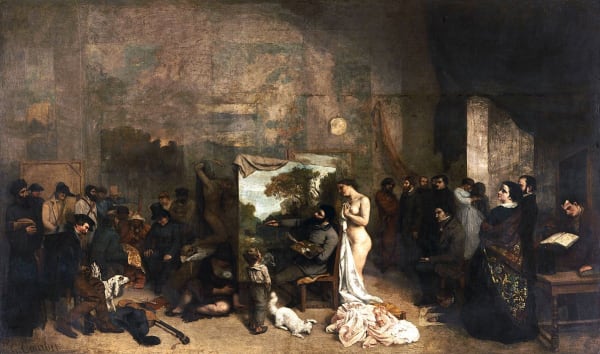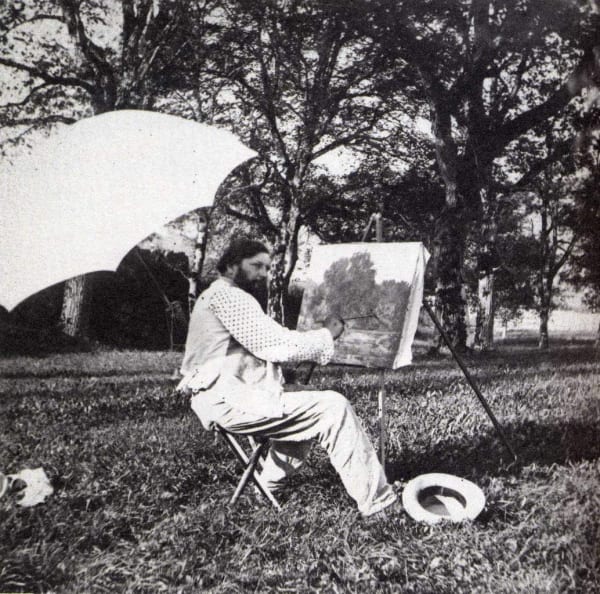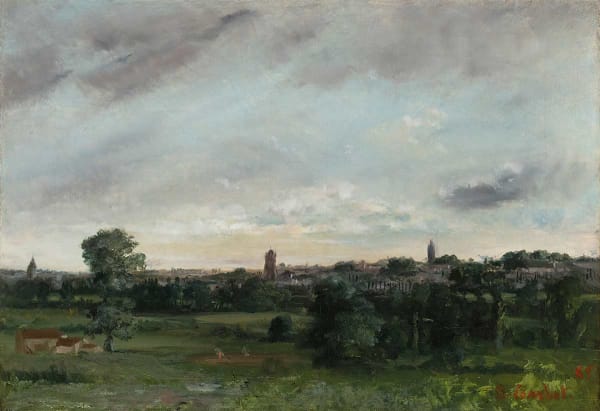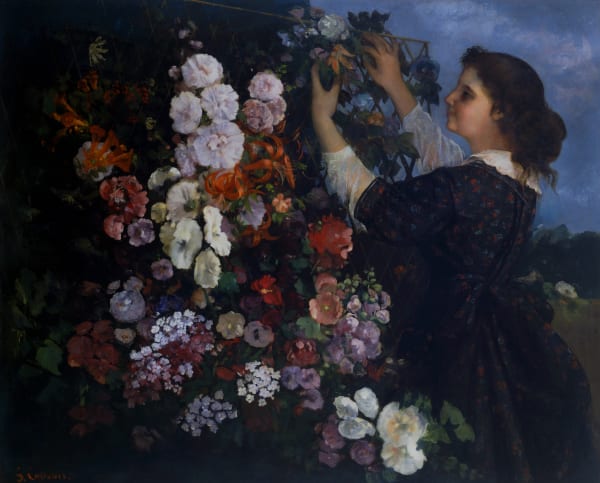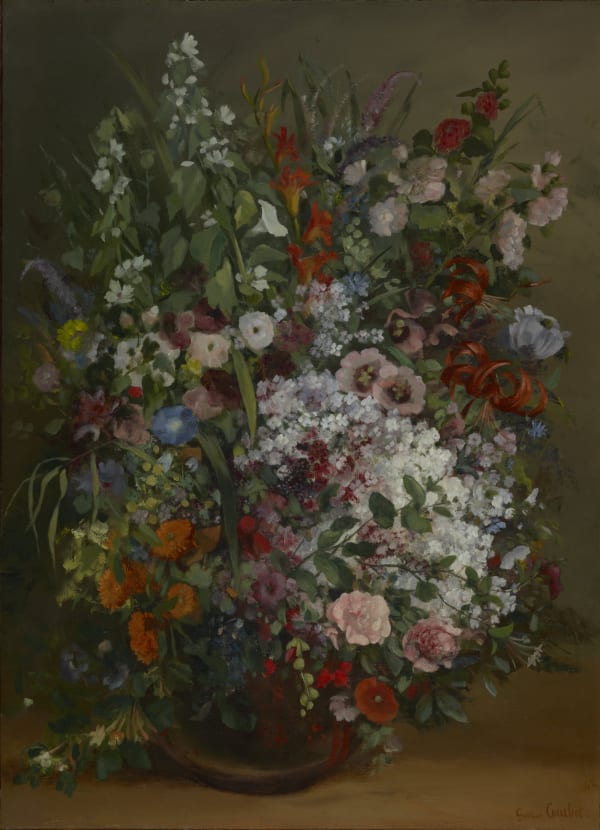-
One Work : One Story : Marigolds by Gustave Courbet
-
-

-
Gustave Courbet in the early 1860's
By early 1860, Gustave Courbet already appeared as the leader of the Realist movement, he was also well established abroad, particularly in Belgium, The Netherlands and Germany.
He met the art critic Jules Castagnary (1830–1888) in 1859, their exchanges slowly evolved into a friendship, and the critic would become an important supporter of Courbet's art.
Under the initative of the critic, he became involved in teaching and came to influence a new generation of artists.
In 1861, Courbet published a major text in the Cahier du Dimanche which appeared as a manifesto, summing up his ideas on paintings and art. His landscapes, monumental scenes and animals were praised by the critic at the Salon in 1861.
-
-

On 28th September 1861, Gustave Courbet called a meeting with art students from different Parisian studios. He announced that he would be starting his own painting studio and would start welcoming students. Gustave Courbet found a studio at the 83 rue Notre-Dame des Champs in the 6th arronndissement in Paris. It was managed thanks to the help of Castagnary.
Archival Image, Rue Notre Dame des Champs, Courtesy BNF
-

Gustave Courbet, The Painter's Studio: A real allegory summing up seven years of my artistic and moral life, 1855
Oil on canvas
Courtesy Musée d'Orsay, Paris
-
-
[...] I hold the opinion that painting is essentially a concrete art and can only consist in the representation of real, existing things. It is a totally physical language, which has for words all visible objects. An abstract object, non visible, non existent is not of the domain of painting. Imagination in art consists in knowing how to find the most complete expression of an existing thing, but never in assuming or creating that thing itself [...] (Gustave Courbet, letter to the young artists, 25 December 1861, and published in the Courrier du Dimanche)
-
Gustave Courbet in Saintonge (1862-1863)
It was in the company of Castagnary, who heralded from Saintes, the region’s major town, that Gustave Courbet arrived in the region of Saintonges, by the night train on 31st May 1862.
Courbet had been Invited to stay at the château de Rochemont by Etienne Baudry (1830–1908), a highly respected republican. His stay, scheduled for a few days, ended up being for almost a year, this being one of his most productive periods artistically. In Rochemont, Gustave Courbet found a little circle of landscape artists, such as Louis Auguin and Hippolyte Pradelles, reinforced by the arrival in August of Jean-Baptiste Corot.
In art, as in character, everything seemed to be at odds with Courbet and Corot. However a mutual esteem for each other allowed them to make the most of this stay, with friendly rivalry even pushing them to paint the same view side by side. The eleven months Courbet spent in Saintonge were among the happiest and most fruitful of his entire career.
-
-

Gustave Courbet & Jules Castagnary stayed in the Castle of Rochemont, invited by Etienne Baudry.
Photograph of the Castle of Rochemont.
-

Gustave Courbet painting en plein air in Saintonge
-
-
Landscapes Scenes
-

-
If the fate of travelling or business takes you to this region ( Saintonges), be cautious of lingering there. Like other legendary or historical places, she has an irresistible charm and singular attractions. You came to stay one day, you stayed a month ; one week, you dwelled for a summer […]
Nothing is more elegantly gracious, more picturesque, fresh than the Saintonges [...] ( Jules Castagnary about the Saintonges region, Courrier du Dimanche, 1862)
-
Still-Lives (1862-1863)
-
Prior to 1862, Courbet had only painted a small handful of floral still lives. During his stay in Saintonges he made a series of flower paintings which retained Realist sensibilities, whilst having a poetic undertone. Several factors may have been at play in his turning to the genre: he was likely encouraged by Gaudin, a friend he made in Saintes during his stay, who expressed a desire for allegorical flower works. They also pay homage to the inventive Dutch still-lives of the seventeenth and eighteenth century. Encouraged by praise from his entourage, Courbet enjoyed this practice which was a new way for him to interpret fleeting nature. The artist included this new series of works in an exhibition held in Saintes in 1863.
-

Gustave Courbet
Les Soucis, 1862Oil on canvas
22 x 27 cm
8 11/16 x 10 5/8 inches
-
Still-Lives in Sainte Pélagie (1871)
In 1871 Courbet was arrested for his part in the toppling of the Vendôme Column, (erected in 1820 by Napoleon I to commemorate the Battle of Austerlitz) during the Paris Commune, the radical government that ruled Paris from March to the end of May that year.
Courbet began painting a series of still-lives, fruits and flowers while incarcerated at Sainte-Pélagie prison. Permitted to paint but forbidden to have models pose for him, his sister Zoé brought him flowers and fruit and he was able to explore still-life painting, a genre that he rarely visited.
-
Records


